7870 Done Right
It’s great to be a PC gamer these days. Gaming PC costs have fallen significantly over the past couple years largely in part due to the amount of performance AMD and Nvidia have been able to cram on their mid range graphics cards, and gaming bundles such as bundles are making it easier than ever to obtain great graphics and some great games at prices unheard of many years ago.
Today we’ll be reviewing ASUS’s custom implementation of the Radeon HD 7870, the ASUS Radeon HD 7870 DirectCU II (HD7870-DC2-2GD5-V2). The Radeon HD 7870 is a mid to high end graphics card, which features a 1GHz clock speed, 1280 stream processors, 80 TUs, 32 ROPs, and 2GB of GDDR5 running off a 256-bit memory bus.
As usual for most of ASUS’s recent graphics card lineup, we get their DirectCU II cooler, which has been ASUS’s go to custom graphics card cooler for a couple generations now. The cooler features a dual fan design, which is advertised to provide 20% better cooling with significantly less noise than the stock design. In addition to the DirectCU II cooler, ASUS has also custom designed the PCB as well, souping up the power delivery system by incorporating a digital VRM design based off DIGI+ VRM along with super alloy capacitors, mosfets, chokes, and much more.
Intrigued? Let’s flip the page and take a closer look.
Specifications
| AMD Radeon HD 7850 | AMD Radeon HD 7870 | ASUS HD 7870 DirectCU II (HD7870-DC2-2GD5-V2) |
|
|---|---|---|---|
| Fabrication | 28nm | 28nm | 28nm |
| Core Clock | 860MHz | 1000MHz | 1000MHz |
| Stream Processors | 1024 | 1280 | 1280 |
| Texture Units | 64 | 80 | 80 |
| ROPs | 32 | 32 | 32 |
| Buffer Size | 2GB GDDR5 | 2GB GDDR5 | 2GB GDDR5 |
| Memory Interface | 256-bit | 256-bit | 256-bit |
| Memory Frequency | 1125MHz (4.5 GHz Effective) | 1200MHz (4.8GHz Effective) | 1200MHz (4.8 GHz Effective) |
| Additional Features | N/A | N/A | DirectCU IIDIGI+ VRMSuper Alloy PowerGPU Tweak |
Benchmarks
1,920 x 1,080
DirectX 11 gaming performanceSleeping Dogs: Frames per second: Higher is better (Min/Avg)Sapphire HD 7770 GHz Edition: 13/19Sapphire HD 7790 Dual-X OC: 16/24AMD Radeon HD 7850: 19/28Asus GTX 650Ti Boost Direct CU II OC: 18/28Nvidia Geforce GTX 760: 24/41Asus HD 7870 Direct CU II TOP: 25/36Asus HD 7950 Direct CU II: 27/39Nvidia Geforce GTX 770: 30/52Sapphire HD 7970 GHz Edition Vapor-X: 36/52Nvidia Geforce GTX 780: 36/60AMD Radeon HD 7990: 59/97Nvidia Geforce GTX Titan: 31/65
Grid 2: Frames per second: Higher is betterSapphire HD 7770 GHz Edition: 34/43Sapphire HD 7790 Dual-X OC: 40/50AMD Radeon HD 7850: 42/52Asus GTX 650Ti Boost Direct CU II OC: 39/52Nvidia Geforce GTX 760: 56/73Asus HD 7870 Direct CU II TOP: 57/73Asus HD 7950 Direct CU II: 56/71Nvidia Geforce GTX 770: 67/90Sapphire HD 7970 GHz Edition Vapor-X: 73/87Nvidia Geforce GTX 780: 71/85AMD Radeon HD 7990: 50/60Nvidia Geforce GTX Titan: 75/93
Company of Heroes 2: Frames per second: Higher is betterSapphire HD 7770 GHz Edition: 11/19Sapphire HD 7790 Dual-X OC: 13/21AMD Radeon HD 7850: 15/28Asus GTX 650Ti Boost Direct CU II OC: 11/22Nvidia Geforce GTX 760: 15/31Asus HD 7870 Direct CU II TOP: 22/39Asus HD 7950 Direct CU II: 21/35Nvidia Geforce GTX 770: 20/40Sapphire HD 7970 GHz Edition Vapor-X: 28/46Nvidia Geforce GTX 780: 27/49AMD Radeon HD 7990: 26/44Nvidia Geforce GTX Titan: 31/55
Metro: Last Light: Frames per second: Higher is betterSapphire HD 7770 GHz Edition: 13/22Sapphire HD 7790 Dual-X OC: 19/28AMD Radeon HD 7850: 20/30Asus GTX 650Ti Boost Direct CU II OC: 14/33Nvidia Geforce GTX 760: 8/45Asus HD 7870 Direct CU II TOP: 19/39Asus HD 7950 Direct CU II: 21/40Nvidia Geforce GTX 770: 24/56Sapphire HD 7970 GHz Edition Vapor-X: 25/51Nvidia Geforce GTX 780: 21/65AMD Radeon HD 7990: 23/75Nvidia Geforce GTX Titan: 27/70
BioShock Infinite: Frames per second: Higher is betterSapphire HD 7770 GHz Edition: 13/28Sapphire HD 7790 Dual-X OC: 14/34AMD Radeon HD 7850: 21/41Asus GTX 650Ti Boost Direct CU II OC: 17/47Nvidia Geforce GTX 760: 15/65Asus HD 7870 Direct CU II TOP: 19/51Asus HD 7950 Direct CU II: 16/57Nvidia Geforce GTX 770: 21/78Sapphire HD 7970 GHz Edition Vapor-X: 19/74Nvidia Geforce GTX 780: 23/91AMD Radeon HD 7990: 14/123Nvidia Geforce GTX Titan: 21/98
Heaven: Frames per second: Higher is betterSapphire HD 7770 GHz Edition: 13/19Sapphire HD 7790 Dual-X OC: 13/23AMD Radeon HD 7850: 16/28Asus GTX 650Ti Boost Direct CU II OC: 17/31Nvidia Geforce GTX 760: 21/43Asus HD 7870 Direct CU II TOP: 18/36Asus HD 7950 Direct CU II: 20/40Nvidia Geforce GTX 770: 24/52Sapphire HD 7970 GHz Edition Vapor-X: 23/51Nvidia Geforce GTX 780: 780 29/69AMD Radeon HD 7990: 30/100Nvidia Geforce GTX Titan: 30/77
Ускоритель от ASUS данной модели
Был выпущен графический ускоритель на базе этого чипа и от компании ASUS. Radeon HD 7870 в этом случае по номенклатуре производителя имел следующее обозначение — HD 7870-DC2-2GD5. Спецификации этой видеокарты ничем особенным не отличались от базовой модели компании «АМД», но различные дополнительные технологии этого ведущего тайваньского производителя компьютерной техники позволяли существенно повысить разгонный потенциал графического адаптера. В их число входили:
-
DirectCU. Суть данной технологии сводилась к тому, что поверхность медного радиатора для отвода тепла полупроводникового кристалла практически напрямую касалась поверхности чипа. Отдельные небольшие промежутки заполнялись улучшенной термопастой. В итоге видеокарта имела больший разгонный потенциал за счет улучшенного теплоотвода.
-
Технология Alloy Power, дополненная придвинутым модулем цифрового питания DIGI+, позволяла осуществлять более гибкую настройку системы электроснабжения графического ускорителя.
-
Утилита GPU Tweak позволяла в режиме реального времени контролировать частоты как самого процессора, так и оперативной памяти и корректировать их значения в случае необходимости.
Отдельно необходимо отметить то, что система охлаждения этого ускорителя включала два фирменных вентилятора вместо одного стандартного кулера. Как результат нередко наблюдалась ситуация в тестах, когда такая модификация рассматриваемой видеокарты существенно опережала более дорогую 660 Ti от NVidia.
Список поставки
Перечень комплектации Radeon HD 7870 в обязательном порядке включал такие компоненты и аксессуары:
-
Графический ускоритель вместе с системой охлаждения.
-
Руководство по установке акселератора, его настройке и использованию.
-
Гарантийный талон.
-
Диск с электронной версией документации и полным набором драйверов для различных модификаций системного программного обеспечения.
-
Набор коммуникационных переходников для реализации режимов CrossFire.
Приведенный ранее список является достаточным для того, чтобы сразу же после покупки такой видеокарты установить ее в системный блок персонального компьютера и начать использовать по прямому назначению.
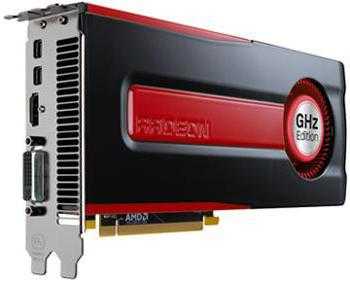
Температурный режим
В 75 оС установлено компанией-производителем максимальное значение температуры для полупроводникового кристалла, который лежит в основе Radeon HD 7870. Характеристики же этого чипа указывают на то, что в процессе работы в номинальном режиме данное значение находиться в диапазоне от 40 до 55 оС. Если же запустить на такой видеокарте ресурсоемкую задачу, то температура может повыситься до 62-63 оС. Это же самое значение будет наблюдаться и в случае разгона ускорителя. Аварийная же температура в 75 оС может быть лишь только достигнута в случае поломки системы охлаждения. В этом случае возможностей пассивной системы охлаждения будет точно недостаточно для осуществления теплоотвода, и графический ускоритель может выйти из строя по причине перегрева.
A Closer Look at the ASUS Radeon HD 7870 DirectCU II
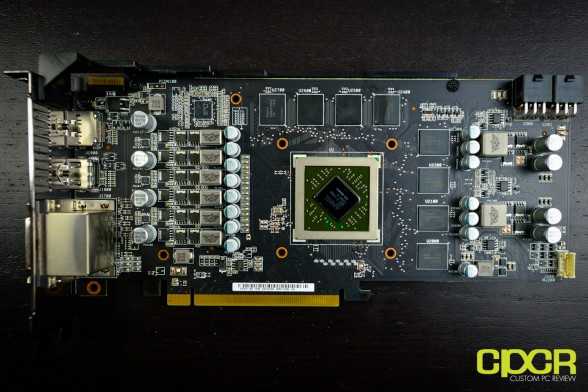
Since many of the features that make the HD 7870 DirectCU II extra special can only be seen on the PCB itself, let’s take off the DirectCU II cooler and take a closer look at the PCB. From quick glance, we can see that the layout is very well organized with the heat generating VRM array sitting away from the GPU itself. Before taking a closer look at the ICs, let’s take a look at the cooler itself.
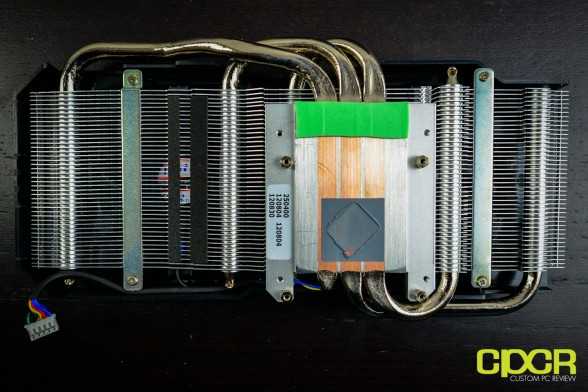
ASUS is using a direct touch copper design for their cooler, which is why they’re calling it the graphics card/cooler the DirectCU II. The DirectCU II cooler uses three 8mm heatpipes to draw heat away from the GPU. This should be more than adequate for the HD 7870 as 28nm graphics generally run a lot cooler than last generation 40nm graphics. One thing interesting about the design is that the fan header is a 5 pin fan header rather than the typical 4 or 3 pin fan header.
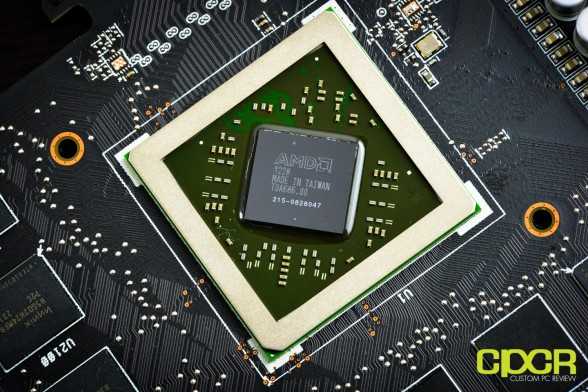
Here’s a look at the GPU itself.
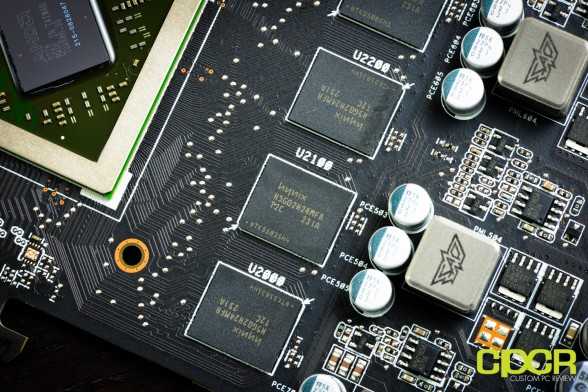
Here’s a look at the GDDR5 modules on the HD 7870 DirectCU II. ASUS is using Hynix model #H5GQ2H24MFR-T2C.
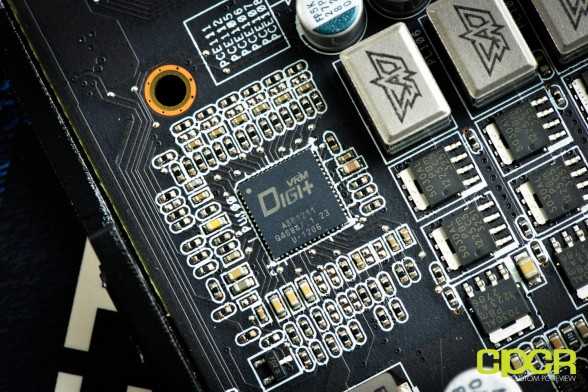
Similar to what ASUS has done with their motherboards, ASUS is also going with a digital power delivery system with the HD 7870 DirectCU II. As we can see, they’ve incorporated their famous DIGI+ VRM design here. Digital power delivery has proven to be much better than the older analog power delivery systems providing cleaner and more precise power delivery with a finer level of control. ASUS claims that their digital design can minimize power noise by up to 30%, enhance power efficiency by up to 15%, widen voltage modulation tolerance, improve overall stability and longevity by 2.5x over reference.
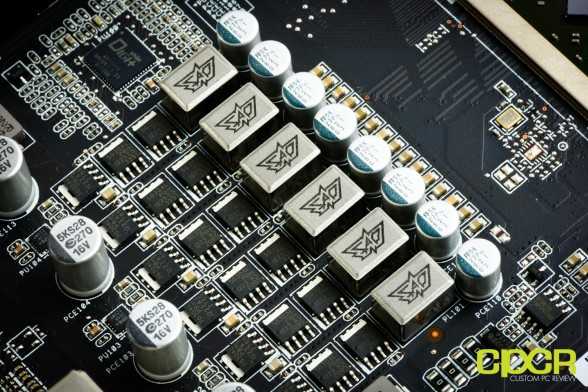
In addition to DIGI+ VRM, ASUS is also using upgraded capacitors, chokes, SAP CAPs, and MOSFETs as well, a group of features they’re calling Super Alloy Power. Super Alloy Power consists of four upgraded sets of components:
- Super Alloy Capacitors – ASUS is using their Super Alloy Capacitors, which they’re claiming can support 30% more voltage and has a 2.5x longer lifespan than traditional capacitors. These capacitors are rated for up to 150,000 hours at 75°C ambient.
- Super Alloy Chokes – ASUS is using Super Alloy Chokes, which are chokes reinforced with a special alloy formula and manufactured at high pressures and temperatures. Super Alloy Chokes are also designed with a alloy core, which reduces vibration and buzzing, commonly referred to as “coil whine”.
- Super Alloy MOS – ASUS is using Super Alloy MOS, which are special ASUS MOSFETs that are designed to be small yet offer better performance than what’s typically found on traditional MOSFETs. ASUS claims that the Super Alloy MOS increases maximum voltage thresholds by up to 30%, runs cooler, and is more efficient as well.
- SAP CAP – In addition, ASUS has also incorporated SAP CAPs as an addition to promote overclocking stability. SAP CAPs are small capacitors placed in close proximity to the GPU itself, which provide lots of instantaneous power to the GPU when needed, which helps reduce/eliminate the possibility of power drops when the GPU is stressed.
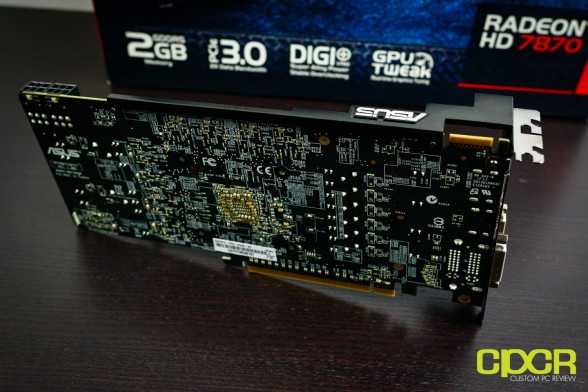
ASUS has also incorporated a brace to the top of the graphics card, which reduces bending of the graphics card and reduces pressure on the PCIe slot when installed into a case.
Решение Gigabyte на основе HD 7870
Графический ускоритель Gigabyte Radeon HD 7870 изначально шел уже с заводским разгоном и повышенным быстродействием. Причем повышение быстродействия в этом случае достигалось за счет увеличения тактовой частоты графического процессора с 1 ГГц до 1,1 ГГц. В итоге этот адаптер мог составить достойную конкуренцию более дорогостоящей видеокарте 660Ti при более низкой стоимости. Среди прочих особенностей данного акселератора можно отметить наличие улучшенной системы охлаждения, которая уже включала 3 кулера и улучшенную разводку медных труб и пластин. Поэтому владельцам таких видеокарт можно было рассчитывать и на дальнейшее увеличение быстродействия. А вот каких-то дополнительных технологий или утилит в этом решении реализовано не было, и приходилось использовать для мониторинга и разгона стандартный пакет программного обеспечения от «АМД» Catalyst.
Testing Setup
Ivy Bridge Test Bench
As Ivy Bridge systems become more mainstream these days, we’ve updated our older Sandy Bridge graphics testing system to our new Ivy Bridge test system with the specifications below. All graphics cards reviewed today have been retested on the new setup and scores from older graphics card reviews may no longer be used in direct comparison.
| CPU | Intel Core i5 3570K |
|---|---|
| Motherboard | Gigabyte Z77X-UD3H |
| Memory | Kingston HyperX Genesis 16GB DDR3 2133MHz |
| Graphics | N/A |
| Boot Drive | OCZ Vertex 4 128GB SSD |
| Storage Drive | Western Digital Caviar Green 3TB |
| Power Supply | Corsair HX650 |
| Case | HSPC High Speed Tech Station |
| Optical Drive | ASUS OEM DVD Drive |
| Operating System | Windows 7 Ultimate x64 SP1 |
Special thanks to Gigabyte, Kingston, OCZ Technology and HSPC for sponsoring our test bench!
На какой сегмент рынка графических решений нацелен рассматриваемый ускоритель?
Видеоускорители компании «АМД» в рамках данного поколения графических чипов распределялись следующим образом:
Решения начального класса обозначались HD 77ХХ. Такие акселераторы имели низкую стоимость и аналогичное быстродействие. Результаты тестов указывали на приемлемую производительность, которой было достаточно для решения практически любой задачи. Единственная оговорка: при выполнении наиболее сложного программного кода необходимо было существенно снижать качество выводимого изображения. К плюсам данного семейства акселераторов можно отнести то, что тепловой пакет у них, как правило, вкладывался в 75 Вт, и дополнительного электропитания к ним подключать не было нужды.
Решения среднего уровня маркировались HD 78ХХ. В эту группу входило два вида адаптеров. Один из них — рассматриваемый в этом материале Radeon HD 7870, а второй — его младшая модификация HD 7850. Улучшенные характеристики графического процессора и оперативной памяти позволяли этим видеокартам показывать более высокие результаты в игровых приложениях.
К премиальным же видеоускорителям принадлежали графические решения серии HD 79XX
В этом случае параметры были еще больше улучшены, и за счет этой важной особенности такие акселераторы все еще продолжают быть актуальными.
В моделях начального уровня количество ОЗУ было равно чаще всего 1 Гб. В 2 раза больше было оперативной памяти в Radeon HD 7870 — 2 Гб. Ну, а старшие модели в обязательном порядке оснащались уже 3 Гб ОЗУ.





























